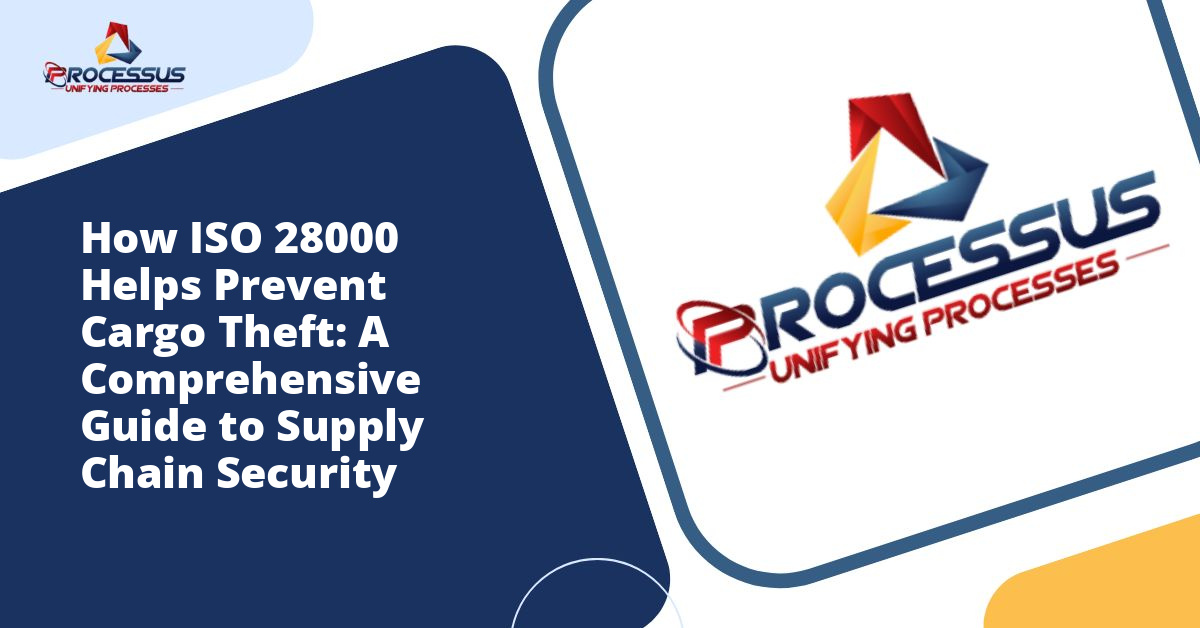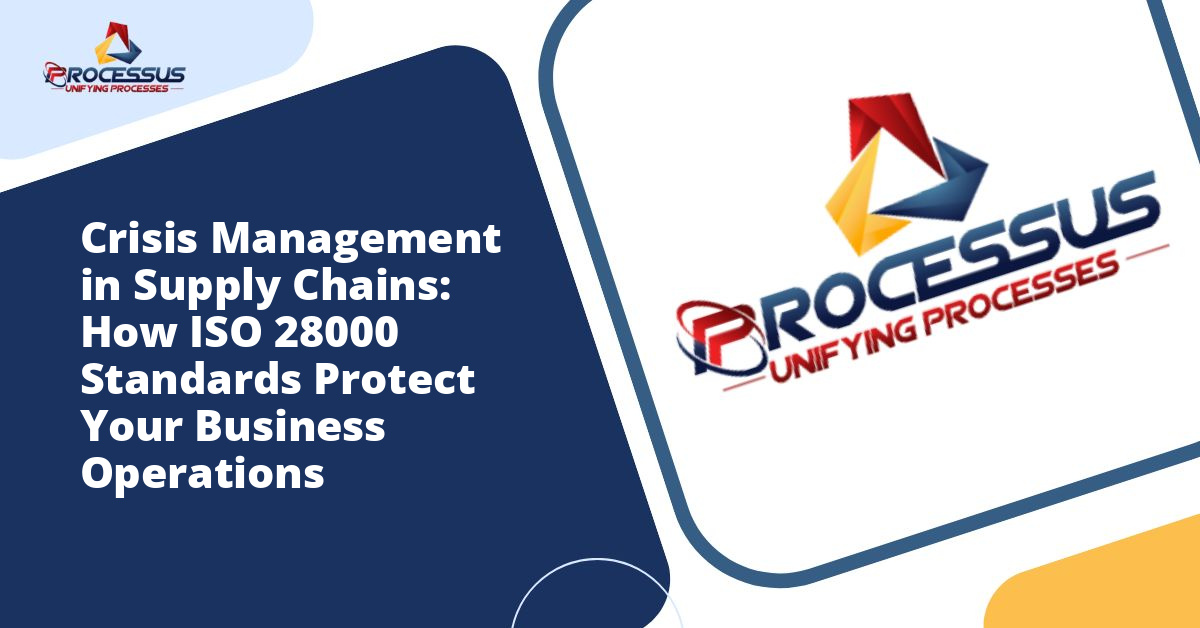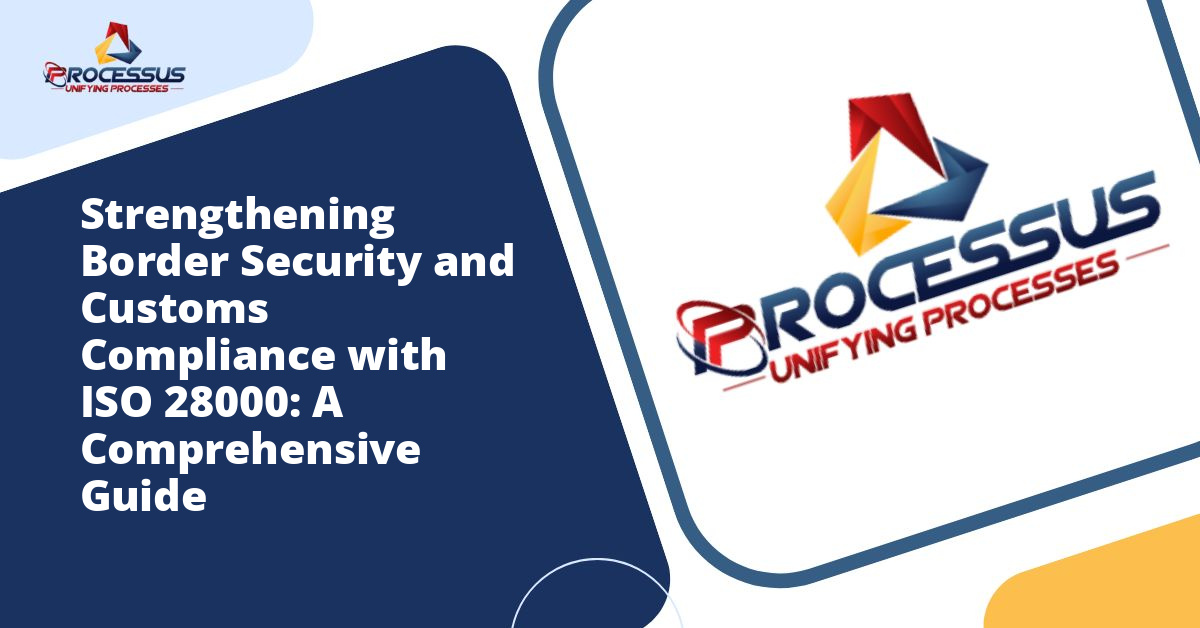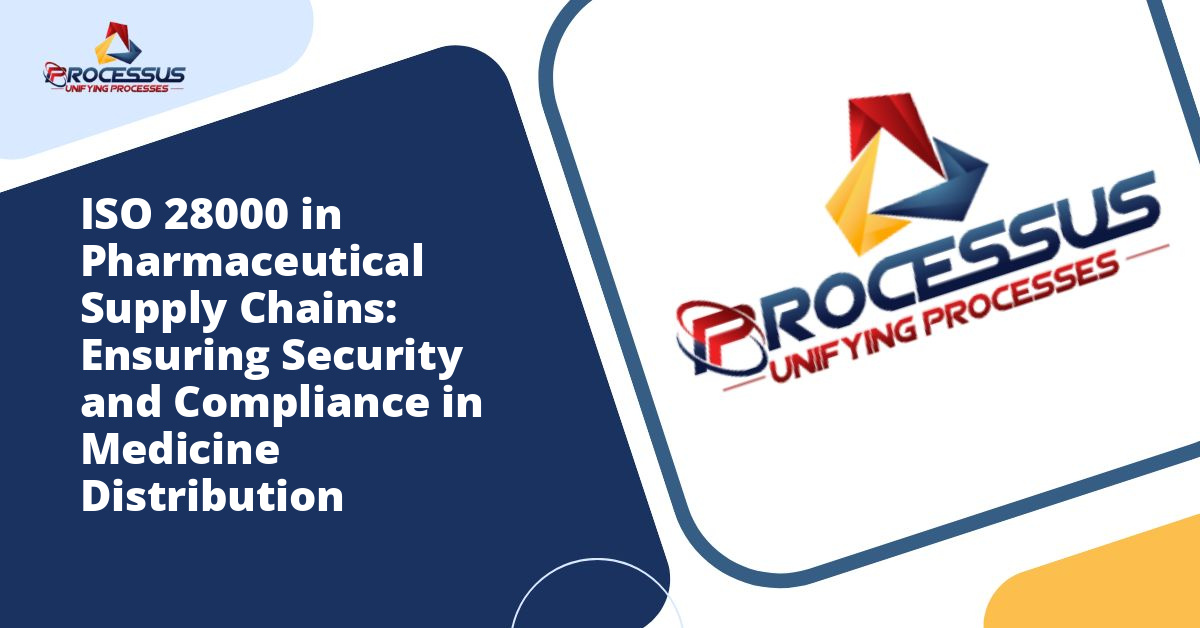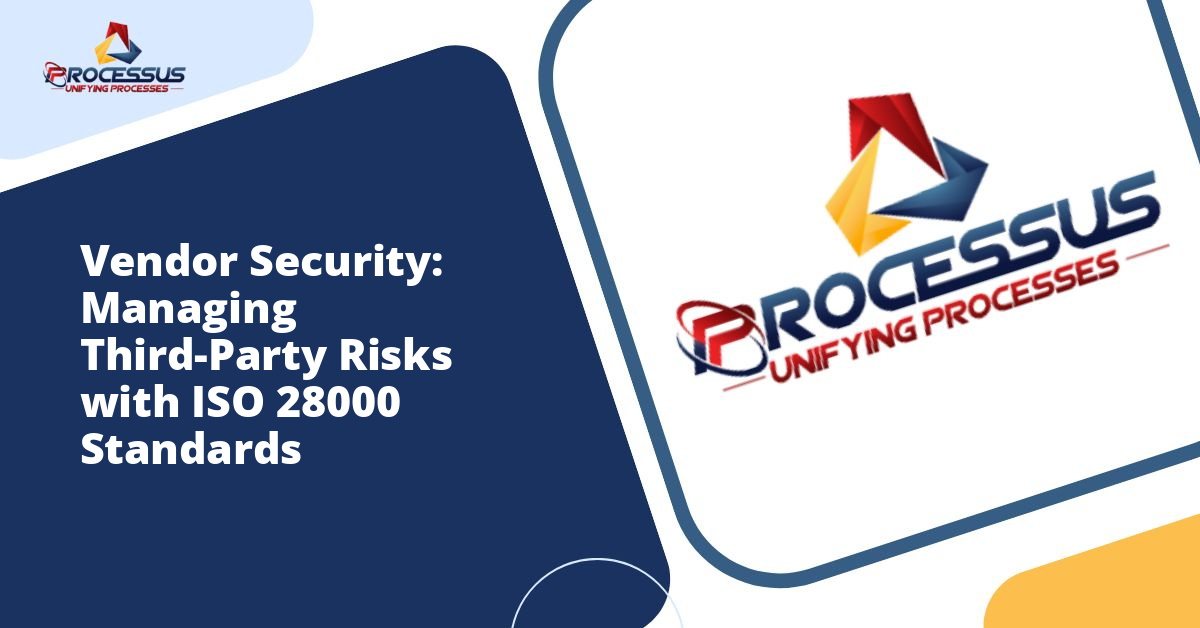Cargo theft represents one of the most significant threats to global supply chains, costing businesses billions of dollars annually. As international trade continues to expand and supply chains become increasingly complex, organizations need robust security frameworks to protect their valuable shipments. ISO 28000 has emerged as the leading international standard for supply chain security management, offering companies a systematic approach to preventing cargo theft and safeguarding their operations.
This comprehensive guide explores how ISO 28000 helps organizations combat cargo theft through structured security protocols, risk management strategies, and continuous improvement processes. Whether you are a logistics manager, security professional, or business owner involved in the movement of goods, understanding this standard can help protect your assets and strengthen your supply chain resilience. You might also enjoy reading about ISO 28000 and Cybersecurity: Protecting Your Supply Chain from Digital Threats in 2024.
Understanding the Scale of Cargo Theft
Before diving into how ISO 28000 addresses cargo theft, it is essential to understand the magnitude of this global problem. Cargo theft occurs when goods are stolen during transportation or while in temporary storage, and it affects every industry from pharmaceuticals to electronics, food and beverage to luxury goods. You might also enjoy reading about Protecting Your Supply Chain: Why ISO 28000 Certification Matters for Modern Businesses.
According to industry reports, cargo theft costs the global economy an estimated $35 to $50 billion annually. These figures include not only the direct loss of goods but also the associated costs of insurance claims, delivery delays, customer dissatisfaction, and damaged brand reputation. In some regions, organized crime syndicates specifically target high-value shipments, employing sophisticated methods that require equally sophisticated countermeasures. You might also enjoy reading about Transport Security Under ISO 28000: Best Practices for Supply Chain Protection.
The impact of cargo theft extends beyond immediate financial losses. Companies face supply chain disruptions that can halt production lines, delay critical shipments to customers, and create vulnerabilities in their just-in-time inventory systems. For businesses operating on thin profit margins, a single significant theft incident can have devastating consequences.
What is ISO 28000?
ISO 28000 is an international standard that specifies requirements for a security management system within the supply chain. Published by the International Organization for Standardization, this framework helps organizations identify security threats, assess risks, and implement appropriate controls to protect their supply chain operations.
The standard applies to organizations of all sizes and types involved in manufacturing, service, storage, or transportation at any stage of the production or supply chain. What makes ISO 28000 particularly valuable is its comprehensive approach to security, addressing not just cargo theft but also terrorism, piracy, contraband smuggling, and other security threats.
ISO 28000 follows the same high-level structure as other ISO management system standards, making it compatible and integrable with systems like ISO 9001 for quality management and ISO 14001 for environmental management. This harmonized structure allows organizations to implement multiple management systems efficiently without duplicating efforts.
Core Components of ISO 28000 That Prevent Cargo Theft
Risk Assessment and Management
At the heart of ISO 28000 lies a comprehensive risk assessment process that helps organizations identify where they are most vulnerable to cargo theft. This systematic approach requires companies to evaluate their entire supply chain, from the point of manufacture through transportation routes to final delivery.
The risk assessment process involves identifying potential security threats specific to your operations, analyzing the likelihood of these threats materializing, and evaluating the potential impact on your business. For cargo theft prevention, this means examining factors such as the value and attractiveness of goods, transportation routes through high-risk areas, storage facility security, and the reliability of partners and contractors.
Once risks are identified, ISO 28000 requires organizations to implement appropriate controls proportionate to the level of risk. This might include enhanced physical security measures for high-value goods, GPS tracking systems for shipments passing through theft hotspots, or additional vetting procedures for personnel with access to sensitive cargo.
Security Planning and Objectives
ISO 28000 mandates that organizations develop a comprehensive security plan with clear, measurable objectives. This planning process ensures that security efforts are strategic rather than reactive, addressing potential cargo theft scenarios before they occur.
Security objectives should be specific, achievable, and aligned with business goals. For example, an organization might set objectives to reduce security incidents by a certain percentage, achieve 100% GPS tracking coverage for high-value shipments, or complete security audits of all third-party logistics providers within a specified timeframe.
The planning phase also involves allocating sufficient resources for security implementation. This includes budgeting for security technologies, training personnel, hiring security staff, and maintaining security infrastructure. Organizations that treat security as an afterthought often find themselves vulnerable to cargo theft, whereas those who plan comprehensively create robust defenses.
Documented Security Procedures
One of the most practical ways ISO 28000 helps prevent cargo theft is through its requirement for documented procedures. When security measures exist only as informal practices or tribal knowledge, they are inconsistently applied and easily compromised. Documentation ensures that everyone in the organization understands their security responsibilities.
These documented procedures cover critical activities such as cargo loading and unloading protocols, seal verification processes, driver identification procedures, and incident reporting mechanisms. By standardizing these processes, organizations minimize human error and reduce opportunities for theft.
Documentation also creates accountability. When procedures are clearly written, it becomes easier to identify where breakdowns occur and to take corrective action. In the unfortunate event of cargo theft, documented procedures provide valuable evidence for investigations and insurance claims.
Specific Cargo Theft Prevention Strategies Within ISO 28000
Personnel Security and Vetting
A significant percentage of cargo theft involves insider knowledge or participation. ISO 28000 addresses this vulnerability through comprehensive personnel security requirements. Organizations implementing the standard must establish processes for vetting employees, contractors, and partners who have access to sensitive cargo or security information.
This vetting process typically includes background checks, reference verification, and assessment of potential conflicts of interest. For positions with high security responsibility, such as drivers transporting valuable goods or warehouse personnel managing inventory, more thorough vetting may be appropriate.
Beyond initial hiring, ISO 28000 emphasizes ongoing personnel security through regular training, security awareness programs, and periodic re-evaluation of staff in sensitive positions. Employees who understand the importance of security measures and their role in preventing theft become an active defense layer rather than a vulnerability.
Physical Security Measures
ISO 28000 requires organizations to implement physical security controls appropriate to their risk profile. For cargo theft prevention, these controls form the first line of defense against criminal activity.
Physical security measures may include perimeter fencing and access control systems at storage facilities, surveillance cameras covering loading docks and warehouse areas, adequate lighting in vulnerable areas, and secure parking facilities for loaded vehicles. The standard encourages organizations to design their facilities with security in mind, eliminating blind spots and creating controlled access points.
For cargo in transit, physical security extends to vehicle security features, tamper-evident seals, lockable cargo compartments, and secure parking locations during rest stops. High-value shipments may warrant additional measures such as security escorts or covert tracking devices.
Technology and Tracking Systems
Modern cargo theft prevention relies heavily on technology, and ISO 28000 encourages the adoption of appropriate technological solutions. GPS tracking systems allow organizations to monitor shipment locations in real-time, immediately identifying route deviations that might indicate theft in progress.
Advanced tracking solutions can include geofencing capabilities that trigger alerts when cargo enters or leaves designated areas, temperature and shock sensors that detect tampering, and communication systems that enable drivers to quickly report security concerns.
Inventory management systems integrated with security protocols help organizations maintain accurate records of cargo movements, making it easier to detect discrepancies that might indicate theft. When implemented within the ISO 28000 framework, these technologies become part of a comprehensive security ecosystem rather than isolated tools.
Partner and Supplier Security Requirements
Supply chains involve multiple parties, and security is only as strong as the weakest link. ISO 28000 addresses this reality by requiring organizations to extend security requirements to their partners, suppliers, and service providers.
This means conducting security assessments of third-party logistics providers, requiring contractors to meet minimum security standards, and including security clauses in commercial agreements. Organizations may need to audit their partners’ security practices or require them to obtain ISO 28000 certification themselves.
By creating a security-conscious ecosystem throughout the supply chain, companies reduce the risk that cargo theft will occur at a partner facility or during a handoff between parties. This collaborative approach recognizes that cargo protection requires shared responsibility across all supply chain participants.
Operational Controls That Reduce Theft Opportunities
Route Planning and Analysis
ISO 28000 encourages organizations to carefully plan and analyze transportation routes, considering security implications alongside traditional factors like distance and cost. Certain routes pass through areas with higher cargo theft rates, and the standard prompts companies to factor this risk into their planning.
Route analysis might reveal that slightly longer routes avoid high-risk areas, or that scheduling shipments to avoid night-time travel through vulnerable regions significantly reduces theft risk. Organizations can also identify secure stopping points along routes where drivers can safely rest without exposing cargo to theft.
Regular route analysis also helps organizations stay current with changing threat patterns. Cargo theft hotspots shift over time as criminals adapt to security measures or as economic conditions change. Continuous monitoring ensures that routing decisions reflect current realities.
Cargo Handling Procedures
The moments when cargo is being loaded, unloaded, or transferred between parties represent particularly vulnerable times. ISO 28000 requires organizations to establish strict cargo handling procedures that minimize theft opportunities during these activities.
These procedures typically include requirements for supervised loading and unloading, documentation verification at every handoff, seal application and verification protocols, and segregation of high-value goods within facilities. By controlling these critical moments, organizations significantly reduce theft vulnerability.
Cargo handling procedures should also address the security of partial loads and consolidated shipments, where multiple customers’ goods share transportation. Clear protocols for tracking individual shipments within consolidated loads prevent confusion that thieves might exploit.
Incident Response and Investigation
Despite best efforts, security incidents including cargo theft may still occur. ISO 28000 requires organizations to establish incident response procedures that minimize damage and facilitate recovery when theft happens.
Effective incident response begins with clear reporting mechanisms that encourage employees to immediately report suspicious activity or confirmed theft. Rapid response can sometimes enable recovery of stolen goods before they disappear into black markets.
The standard also requires thorough investigation of security incidents to identify root causes and prevent recurrence. Was the theft enabled by inadequate physical security, insider knowledge, procedural non-compliance, or a previously unidentified vulnerability? Understanding how theft occurred allows organizations to strengthen their defenses against similar future incidents.
Continuous Improvement and Adaptation
One of the most powerful aspects of ISO 28000 is its emphasis on continuous improvement. The standard operates on the Plan-Do-Check-Act cycle, requiring organizations to regularly review and enhance their security management systems.
For cargo theft prevention, this means regularly analyzing security performance metrics, reviewing incident data to identify trends, staying informed about evolving theft tactics, and updating security measures accordingly. What worked effectively last year may become inadequate as criminals develop new methods or as your business operations change.
Continuous improvement also involves learning from near-miss incidents. Perhaps a driver noticed suspicious vehicles following them but the cargo ultimately arrived safely, or a facility intrusion attempt was thwarted by security systems. These near-misses provide valuable intelligence about vulnerabilities before actual theft occurs.
Management review, a key requirement of ISO 28000, ensures that senior leadership regularly evaluates security performance and allocates resources for improvement initiatives. This top-level attention keeps security prominent in organizational priorities rather than allowing it to become neglected.
The Business Benefits Beyond Theft Prevention
While preventing cargo theft represents the primary security objective, organizations implementing ISO 28000 discover numerous additional benefits. Insurance companies often offer reduced premiums to businesses with certified security management systems, recognizing that these organizations present lower risk.
Customers increasingly demand supply chain security as part of their supplier requirements. ISO 28000 certification demonstrates to current and prospective clients that your organization takes security seriously, potentially opening doors to new business opportunities.
Regulatory compliance becomes simpler when you have a comprehensive security management system in place. Many countries have implemented supply chain security regulations, and ISO 28000 provides a framework that often satisfies these requirements.
The operational discipline that ISO 28000 brings to security also improves overall supply chain efficiency. Clear procedures, better tracking, enhanced communication, and regular performance review contribute to smoother operations beyond just security outcomes.
Implementing ISO 28000 in Your Organization
For organizations considering ISO 28000 adoption, the implementation process typically follows several key steps. It begins with securing management commitment and allocating necessary resources. Without genuine support from leadership, security initiatives struggle to gain traction.
Next comes a comprehensive gap analysis comparing your current security practices against ISO 28000 requirements. This assessment identifies areas where your organization already meets the standard and areas requiring development.
Based on the gap analysis, you develop an implementation plan addressing deficiencies, establishing new procedures, and training personnel. Implementation should be systematic rather than attempting everything simultaneously, often prioritizing areas of highest risk or easiest wins.
Throughout implementation, documentation development proves essential. You need to create security policies, procedures, work instructions, and forms that capture your security management system in writing.
Once implemented, organizations typically pursue certification through an accredited third-party auditor. While certification is optional, it provides independent verification of compliance and carries more weight with customers and partners than self-declaration.
Conclusion
Cargo theft represents a persistent and evolving threat to supply chain operations worldwide. As criminals employ increasingly sophisticated methods, organizations need comprehensive security frameworks rather than piecemeal solutions. ISO 28000 provides this framework, offering a systematic approach to identifying vulnerabilities, implementing appropriate controls, and continuously improving security performance.
From risk assessment and personnel vetting to physical security measures and incident response, ISO 28000 addresses cargo theft from multiple angles. Its emphasis on documentation ensures consistency, its risk-based approach enables efficient resource allocation, and its continuous improvement model keeps security measures current with evolving threats.
For businesses involved in supply chain operations, implementing ISO 28000 represents more than compliance with an international standard. It demonstrates commitment to protecting customer goods, strengthening operational resilience, and maintaining the trust that underpins successful supply chain partnerships. In an era where cargo theft costs billions annually and disrupts global trade, this comprehensive approach to security management has become not just beneficial but essential.
Organizations that embrace ISO 28000 find themselves better protected against cargo theft while also enjoying broader benefits including reduced insurance costs, enhanced customer confidence, and improved operational efficiency. As supply chains continue growing in complexity and value, the security framework provided by ISO 28000 will remain an invaluable tool for protecting goods and ensuring supply chain integrity.

